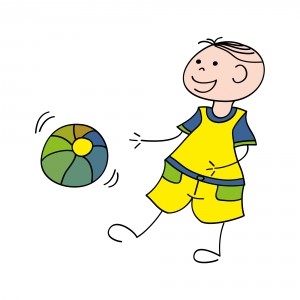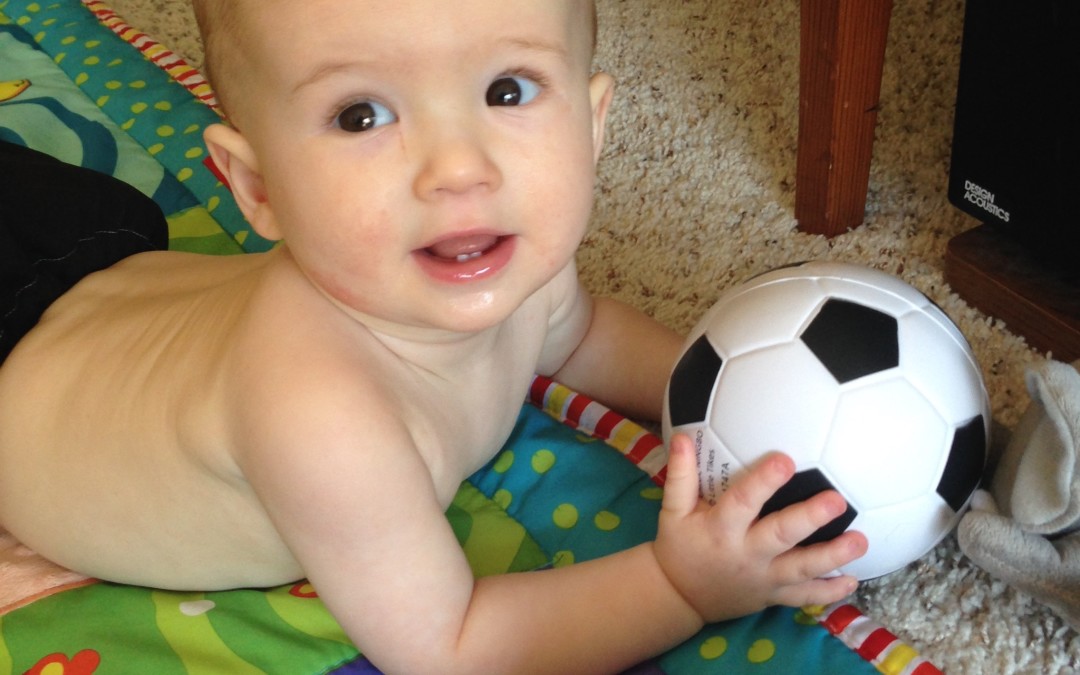By Randi Kinney, PT, DPT, MTC
In part 1, I spoke about how movement patterns naturally develop in humans from reflexive, involuntary movements to purposeful, voluntary actions. You will now see how this information is the guide we use to best assess and treat common movement problems that are seen in many children, and persist into adulthood.
As parents, coaches, trainers, and other healthcare professionals it is our responsibility to understand normal development and when and/or where it is not occurring to ensure the best physical outcome for our children, clients and patients.
 For example, if a child is having difficulty with coordinating the movement to throw or kick a ball, it is important to first assess the child’s ability to properly perform other movement patterns such as rolling patterns, or bear crawling prior to assuming they are “not athletic” or “just un-coordinated.” They may be un-coordinated, but it is our job to help understand why the task is difficult for them and then provide the child with the proper tools to perform the movement with coordination. It may be that they are unable to stabilize their trunk, and therefore unable to control their arm trying to throw the ball, or control their leg trying to kick the ball on an unstable trunk, and thus the movement is un-coordinated.
For example, if a child is having difficulty with coordinating the movement to throw or kick a ball, it is important to first assess the child’s ability to properly perform other movement patterns such as rolling patterns, or bear crawling prior to assuming they are “not athletic” or “just un-coordinated.” They may be un-coordinated, but it is our job to help understand why the task is difficult for them and then provide the child with the proper tools to perform the movement with coordination. It may be that they are unable to stabilize their trunk, and therefore unable to control their arm trying to throw the ball, or control their leg trying to kick the ball on an unstable trunk, and thus the movement is un-coordinated.
In physical therapy we utilize this understanding of CNS maturation to help develop appropriate rehabilitation and/or preventive programs for our patients of all ages. We must take into account that throughout life, structure and function can be altered by injury, habitual patterns, degenerative disorders, or chronic overload, and we, in turn, see tissue failure, pain and compensatory movement patterns.
It is our job to determine the musculoskeletal and/or biomechanical impairment(s) and help restore normal pain free movement. We can use the knowledge we have of proper CNS maturation to aid in developing a program that mimics the pre-determined developmental sequence in order to ultimately achieve restoration of normal pain free movement.
 For example, we see many patients today with postural dysfunctions related to sitting at a computer most of the day for work or for pleasure. As technology continues to grow, so does the number of jobs involving computers and technology. But, we as a species are not meant for sitting, or for being stationary for prolonged periods.
For example, we see many patients today with postural dysfunctions related to sitting at a computer most of the day for work or for pleasure. As technology continues to grow, so does the number of jobs involving computers and technology. But, we as a species are not meant for sitting, or for being stationary for prolonged periods.
Look at our ancestors who had to hunt and gather their food, and then farm and harvest for a living… postural dysfunctions were not as prevalent because humans were constantly moving. Today, we are even seeing postural dysfunctions in younger populations, and even children due to the increased use of computers, i-pads, laptops and i-phones for school and pleasure.
As physical therapists, we assess for the physical and functional impairments that could be contributing to the patient’s pain or dysfunction, but most importantly we assess for which of the “normal development movement patterns” have become dysfunctional or impaired. Then we start treatment at that certain developmental milestone in order to “tap back into” those normal movement patterns that are still pre-sequenced in our CNS. No matter the age of the patient, child, or adult, we go back to training proper rolling patterns, proper crawling patterns and proper locomotion patterns to get back to normal movement patterns with proper trunk, pelvis and chest stabilization.
The assessment tools and tests utilized in SPIDERfit kids incorporate these important movement patterns and can help us recognize proper and improper movement patterns prior to participation in physical activity. This is an integral piece of the puzzle in preventing injuries in adolescents and in helping develop successful, physically active kids who continue to develop into successful, physically active adults.
About Dr. Randi Kinney, PT, DPT, MTC
Dr. Kinney is a physical therapist, with a certification in manual therapy (MTC). She is the director of Water and Sports Physical Therapy’s Scripps Ranch Clinic, director of Pediatrics and the supervisor and coordinator of the elite exercise specialist program which entails the education of advanced land and aquatic exercise.
Craig Valency, MA, CSCS, president and co-founder of SPIDERfit, has been a personal trainer for the last 11 years. He is currently working at Fitness Quest 10 in San Diego, an elite personal training and athletic conditioning facility. He specializes in youth strength and conditioning programs that promote physical literacy, injury prevention and optimal performance. Along with training youths from 6 to 18 years of age for general fitness, Craig has also worked with some of the top junior tennis players in the world. He has been a physical education consultant for the Stevens Point school district in Wisconsin for the last 3 years, helping revamp the district wide programming for the K-12 PE curriculum. Craig earned his bachelor degree from UCLA, and Masters Degree in Kinesiology from San Diego State University.





Connect with SPIDERfit!